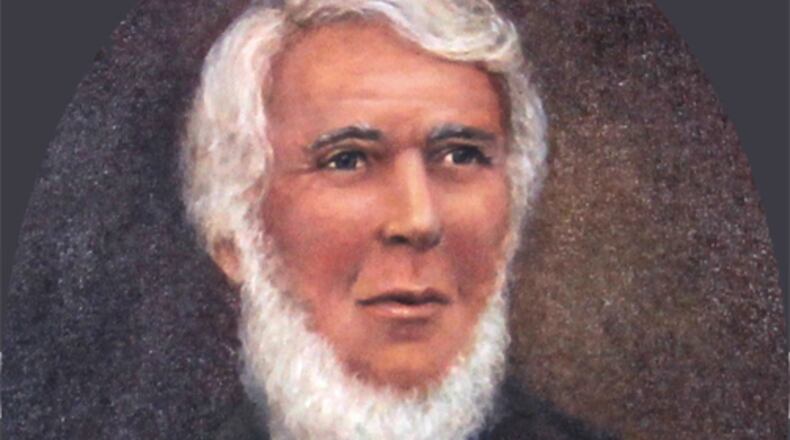Q: How did Mableton get its name?
A: Robert Mable, one of the largest landowners in Cobb County in the mid-1800s, continues to hold a place of prominence today in this metro Atlanta community.
Mable is the city of Mableton’s namesake. About 5,000 people each year visit the Mable House, which is on the National Register of Historic Places and part of a complex with an arts center and amphitheater.
Born in 1803, Mable was a Scottish immigrant who lived in Savannah before he bought 300 acres in what now is Cobb County during Georgia’s Gold Land Lottery of 1832. He was a farmer who also built and operated sawmills.
“He was influential, in that he helped build many of the buildings in the area,” said Eleanor Wade, a volunteer docent and member of Friends of the Mable House.
Mable was one of the first “prosperous settlers” in the area, she added.
Mable and his family lived in a log cabin until 1843, when he completed the two-story, plantation plain-style house.
The 16-acre property also consisted of separate buildings for a kitchen and smokehouse, a family cemetery and even a sweet potato house and blacksmith shop, according to MableHouse.org and a report by a historic preservation class at Georgia State University.
The log cabin was repurposed as the site of the first school in Mableton. It burned to the ground in 1900.
During the Civil War, the Mable House was used as a temporary hospital, where Union troops were treated by Almeda Mable, Robert’s second wife. He had seven children with his first wife, Pheriby, who died during childbirth and three children with Almeda (she also had two children with her late first husband).
His home was spared during the burning of Atlanta, according to MableHouse.org.
When the Georgia Pacific Railway received land from the Mable family to build a depot during the 1880s, an engineer named the stop Mable Station, in honor of Mable and his family. Mable Station was later changed to Mableton.
Robert Mable passed away in July 1885 when he was 83.
In 1912, Mableton officially became a city. But just four years later, it was unincorporated when the town flooded, Wade says, and residents couldn’t pay for the damages.
It remains unincorporated, and has about 39,589 residents, according to 2015 estimates from the U.S. Census Bureau. On May 13, the Mable House complex (5239 Floyd Road) hosts Mableton Day, an annual community celebration.
If you’re new in town or have questions about this special place we call home, ask us! E-mail q&a@ajc.com or call 404-222-2002.
About the Author
The Latest
Featured


